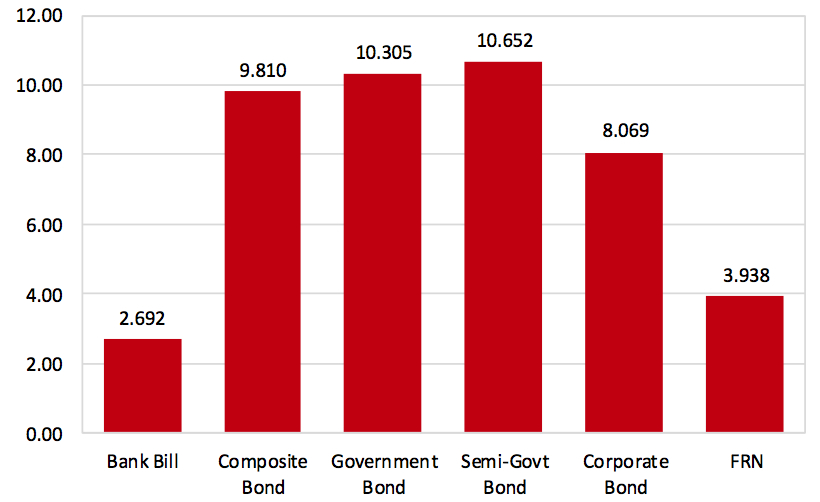It is a well-known fact that Australians love to invest in shares and property, often to the exclusion of other asset classes. Depending on market dynamics, this can be a costly proposition and not one that delivers the best risk-weighted returns.
Admittedly, Australian listed property had a stellar year in 2014 and performed strongly, returning 26.4 per cent. All through the year, however, the RBA expressed worries that the low cash rate could be inflating a real estate bubble and newspaper headlines have echoed these worries. In other words, real estate returns may have been high, but so were the risks.
The Australian share market, in contrast, ended the year up 5.3 per cent, which seems less impressive when compared to the 3.85 per cent that investors could have secured from a 12 month term deposit. And in terms of risk, a TD with an Australian licensed deposit taking institution is guaranteed up to $250,000 by the federal government.
Bonds in Australia, however, also had a stellar year, particularly for an asset class that is considered far less risky than equities or real estate. Fixed-income in Australia overall yielded 9.8 per cent for the year while international fixed-income yielded 11 per cent. As the chart below shows, bonds performed strongly with the Bloomberg composite bond index returning 9.81% for 2014, the semi government index 10.652%, the government bond index 10.30% and the corporate bond index 8.07%.
12-Month Bond Index Returns (%)

There is no guarantee that 2015 will be a repeat of 2014, but according to Bloomberg, Australian bonds are off to their best start in four years, gaining 0.4 per cent in the first 11 days of 2015. This could be the time when Australian investors reassess their view that bonds are difficult to access, too complicated to understand or simply too dull.
Both the Australian government and the ASX are trying to demythologise bonds in order that more investors understand them and include them in their portfolios since bonds tend to do well when other financial markets are doing badly.
Why did Australian bonds do so well in 2014?
As with other investments, bonds can be bought and sold during their lifetime, which means that they have a market price. Many bonds are bought and sold by large institutional investors but some bonds are listed and can be bought and sold on the ASX.
When the economy is looking strong, interest rates will rise and when the economy is looking weak, interest rates will fall. If the RBA lifts the cash rate, fixed rate bonds will lose some of their appeal and their prices will fall. If the RBA cuts rates, fixed rate bonds will looks more attractive and the market price will go up.
From an investor perspective, returns from the bond market represent a combination of the interest payments from the bonds and the change in their market price. Bond prices went up in 2014 reflecting the fact that demand for them went up, while yields were squeezed down. An understanding of why yields will go down for prospective buyer when the market price of a bond goes up is best illustrated in an example:
- Bond X has an issue price of $100 and pays a fixed coupon of 5% per year.
- If the market price of Bond X rises, buyers will have to pay a premium to buy it.
- If the market price of Bond X falls, buyers will expect a discount when buying it.
The running yield on Bond X (i.e. the coupon payment divided by the current market price) changes as the price changes.
- $5 interest on Bond X bought at face value of $100 = 5% yield
- $5 interest on Bond X bought at current market value of $105 = 4.76% yield (5/105 x 100)
- $5 interest on Bond X bought at current market price of $95 = 5.26% (5/95 x 100)
Generally speaking, bond yields will fall if the economy looks fragile, such as when unemployment increases, business confidence falls, GDP falls and so on. When such events happen, investors become more cautious and shift their money into bonds because they think they are safer. The lift in demand forces bond prices up and yields down.
 |
Paul McNamara is an editor and journalist with over 20 years’ experience. His career includes spells with the Financial Times, Euromoney, BRW Media, Asia-Inc and Banker Middle East. At present he is editor of YieldReport. YieldReport is a digital newsletter that carries comprehensive pricing and commentary on Australian interest rate securities in a monthly and weekly report. Each issue covers bank bills, cash accounts, term deposits, government bonds, semi-government and corporate bonds, hybrids, ETFs, managed funds and more. Click here for a free trial subscription. |
|








